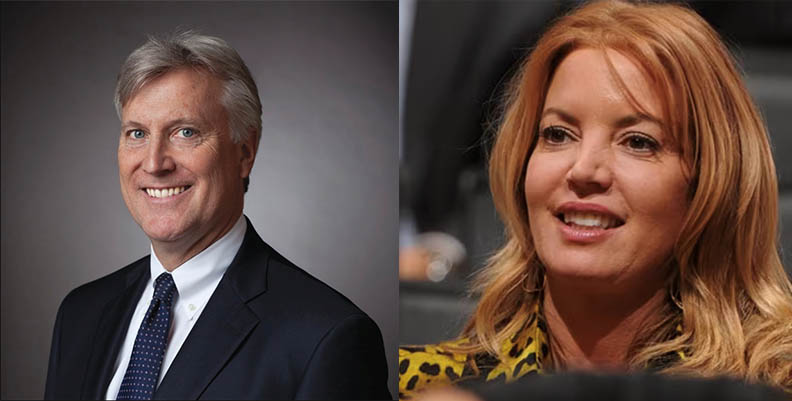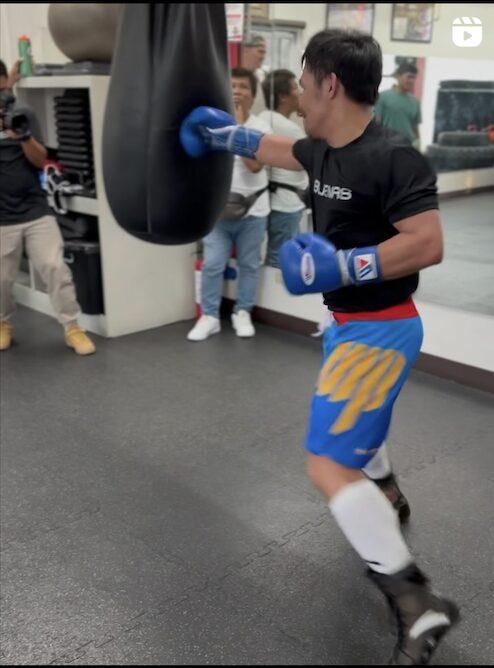BEFORE Emmanuel “Manny” Pacquiao became a world boxing champion, he was known as Kid Kulafu.
In a film titled after Pacquiao’s childhood boxing nickname, the rags chapter of the people’s champ’s rags-to-riches story is conveyed in a dramatization that focuses on his younger years.
“Kid Kulafu” takes viewers on an in-depth journey through Pacquiao’s life in poverty and in an area of the Southern Philippines where strife between militants and police often leaves locals caught in the middle.
The biopic also depicts how his Tio Sardo got him started in boxing, how he worked collecting bottles after school, how he and his brother sold bread to earn money for the family after his mother suffered a heart attack, and how his mother was against his desire to box because she wanted him to become a priest.
A number of stories have already been told about the Philippine boxer, however, director Paul Soriano came with a different approach when pitching the idea to Pacquiao.
“I told him, well, the handle for this would be about your childhood, something maybe that not many people know in detail. And that kind of lit a fire in him I think,” Soriano said during a Q&A session following a “Kid Kulafu” screening on Tuesday, Oct. 27, at the ArcLight in Culver City for the Asian World Film Festival.
It took three years from the start to completion of the film, which included extensive research and hours of stories from Pacquiao.
“Manny is a hard guy to catch. You don’t get him every day, so when he calls, you kind of have to make time to talk and the challenge was what do we put in the film,” Soriano said.
Completing the movie took two years of research and about a year of filming, which included six months of preparation work and 34 days of filming in a span of three to four months.
With a runtime of 108 minutes, Soriano said, “Kid Kulafu” is only a small snippet of what Pacquiao went through in his life. And with the boxer’s abundance of vibrant memories while he was growing up, Soriano found it challenging to find the heart of the story.
However, he said 80 percent of the storyline is factual.
“Of course in every biopic that you do there’s always that creative license that you take. We didn’t make up anything. We just compressed it to make it look like it happened all right at the same time,” Soriano said.
He added that he is happy with the finished product, which was completed with a budget equivalent to about $1 million.
Big-name Philippine actors
The film stars big-name actors, with 17-year-old Robert “Buboy” Villar portraying the younger Pacquiao, Emmanuel; Alessandra de Rossi as his mother, Dionisia; Cesar Montano as Tio Sardo; Alex Vincent Medina as his father, Rosalio; and Khalil Ramos as his friend Eugene, who died in the boxing ring.
While the cast is well-known in the Philippines, Soriano said it was more important to choose actors who possessed a similar appearance to the roles in the story.
“I couldn’t get a young kid to play Pacquiao if he didn’t have kind of a resemblance … so I had to go with authenticity as much as possible because it was a biopic,” the director said.
In casting Villar for the lead, Soriano said the teenager still had to audition despite his popularity in the Philippines.
“I still wanted to see as [much] talent as possible and it was a challenge because did you want to get a boxer and teach how to act, or did you get an actor you teach how to box?” Soriano said.
It was Villar’s acting capabilities, his resemblance to Pacquiao and his ability to emulate the boxer’s fighting style that set him apart from others who auditioned for the role, Marie Pineda, producer of the film, told the Asian Journal.
“It was a challenge because did you want to get a boxer and teach how to act, or did you get an actor you teach how to box? It was just very fortunate that we got a great actor who also learned how to box. It’s just I guess one of those blessings you thank God for,” Soriano said.
Villar trained for about three to four months with a mixed martial arts champion in Asia who served as the film’s fight director. They studied Pacquiao’s earlier fights, where he was more of a brawler.
“The fight scenes were extremely tough because you’re mimicking one of the world’s best boxers and you kind of have to do justice to that,” Soriano said. But he commended Villar for his performance.
“He really embraced the character, took the challenge. He did a great job,” he said.
Another cast member the crew got “lucky” with was de Rossi.
“I think she was able to capture Manny’s mom’s humor and strong personality without making it too much of a caricature. She was able to balance showing her love for her son while also showing her humorous side,” Pineda said.
Pacquiao helps with filming locations and release
In addition to ensuring the authenticity of “Kid Kulafu” through the actors, the crew also did so through the filming locations. A considerable portion of the movie was shot in the mountains – one of the biggest expenses, Soriano said – and many scenes were filmed in original locations in General Santos City.
Pineda said the ring where Pacquiao fought in General Santos was the same one featured in the biopic.
“So we traveled very far to get the authenticity of the location,” Pineda said.
Despite logistical challenges, Pacquiao helped in securing locations in the area, where the filming took place for about two weeks.
The boxer also helped with promoting the movie, which hit theaters in April this year, despite the fact it was around the time of his bout against Floyd Mayweather, Jr.
“Kid Kulafu” was shown in select theaters in North America, but Soriano said the concentration was likely on Filipino communities. He added that the release was not as wide, likely due to the outcome of the Fight of the Century on May 2.
Since April, the biopic has been screened at multiple film festivals, including the Raindance in London, Tokyo International Film Festival the Guam International Film Festival, where Villar won the Achievement in Acting award. Later this month, it will be screened at a film festival in Hawaii.
“Kid Kulafu” is also being shown on Red, a channel by HBO, on a rotational broadcast.
Pineda and Soriano said Pacquiao will further be hosting free screenings of the film in General Santos City at the end of November.
The biopic will also be released on DVD before the end of the year and possibly online, according to Soriano.
Overall takeaway
Pineda and Soriano hope “Kid Kulafu” will be seen by as many people as possible and that Pacquiao’s story will inspire viewers to work hard and believe that they can accomplish what they set out to do.
“I was very captivated by Manny’s story. Hopefully it gives inspiration to the people who watch the film that with hard work and determination, you can do anything. What a better example than through Manny Pacquiao, who is known all over the world,” Soriano said, adding that Pacquiao’s faith in God is a significant key to his success.
The film further shows how Pacquiao got to where he is, not only with hard work, but with talent and the support of his family.
In the development of the storyline, Soriano said Pacquiao gave the production the freedom to put everything – both good and bad – and did not dictate what parts to put in.
“We were trying to show the human side of Manny as a child, his drive, his relationship with his family – especially [with] his mother. Those are things we really wanted to highlight,” Soriano said.
Although “Kid Kulafu” specifically tells the story of Pacquiao, it isn’t just about him: it’s also a story about faith and dedication.
“At the end of the day, his goal was to be the best boxer in the world. Hopefully the film can kind of trigger that,” Soriano said.
- Tokyo-Manila-LA Jazz Summit: Democratic Artistic Endeavor
- The Weight of Stardom, the Lightness of Being: Sharon Cuneta’s Quiet Transformation
- From “Hungry City” to co-chief critic at the New York Times – A Filipino American voice redefines food journalism
- Pradash M. Manimba’s The Heartbeat of a journalist: The Inspiring Journey of Rogelio Constantino Medina
Back To Top






